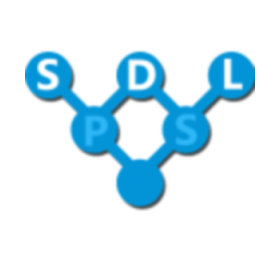Documentation
SDL-PAND: Pandemic simulation to test the effectiveness of containment strategies through Cellular Automata and Intelligent Agents using formal languages
The goal of the project is to develop a functional prototype that allows to evaluate pandemic containment alternatives, based on a graphical conceptualization of the models, which represent the modeling hypotheses. The system must allow it to expand by incorporating new working hypotheses and using on two fundamental sources, data on the evolution of the pandemic (data showing the past) and sensor data (mobile phones or other devices) showing a present vision of the situation. This will allow to define forecasting models of the propagation of the pandemic from the analysis of citizens behavior. The model must also be able to expand its semantics and computing capabilities (from, for example, co-simulation) to include models of traffic management, evacuation, etc.
The aim of the project is both to generate a web application to analyze alternatives, and to define a working methodology that allows to establish a common framework for the different specialists, who must collaborate in the definition of complex models. This allows us to understand the hypotheses that govern the models and, from them, to understand the causality that derives from the multidisciplinary knowledge provided by specialists from different areas, who would not otherwise enter this discussion.
You can review our infographic here.
Experiments
SDL-PANDv1.7
(Not updated anymore)
First version with simple containment measures. The goal of this experiment is the estimation of the parameters and the initial definition using SDL of the model.
SDL-PANDv1.9
(Not updated anymore)
Version that includes the detailed information and the prevision for the different Health Regions in Catalonia.
SDL-PANDv2.5
(Not updated anymore)
SDL-PANDv2.6
(Not updated anymore)
SDL-PANDv2.7
(Not updated anymore)
SDL-PANDv2.8
(Not updated anymore)
SDL-PANDv2.9
(Current version)
This experiment shows the evolution of the pandemic for all Catalonia with basic containment measures. Now the definition is based on a cellular automaton structure.
Methodology
We use Industry 4.0 along with Operations Research and Statistics techniques in this project.
The details of the methodology will be published here in different journals and conferences.

Publications
Fonseca i Casas, P.; García i Carrasco, V.; Garcia i Subirana, J. SEIRD COVID-19 Formal Characterization and Model Comparison Validation. Appl. Sci. 2020, 10, 5162. https://doi.org/10.3390/app10155162
Fonseca i Casas,
P., Garcia i Subirana, J., Garcia i Carrasco, V., Silva de Barcellos,
J. L., Roma, J., & Pi, X. (2020). SDL Cellular Automaton COVID-19 conceptualization.
144–153. https://doi.org/10.1145/3419804.3421452
Fonseca i Casas,
P., Garcia i Subirana, J., Garcia i Carrasco, V., Pi, X. (2020). SEIRD-CA-SDL model for COVID-19 containment scenarios in Catalonia (preprint). https://www.researchgate.net/publication/345162866_SEIRD-CA-SDL_model_for_COVID-19_containment_scenarios_in_Catalonia
Fonseca i Casas,
P.; Garcia i Subirana, J.; García i Carrasco, V.; Pi i Palomés,
X. SARS-CoV-2 Spread Forecast Dynamic Model Validation through Digital Twin
Approach, Catalonia Case Study. Mathematics 2021, 9, 1660. https://doi.org/10.3390/math9141660
Team
Dr. Pau Fonseca
|
Víctor García
|
Jorge L. Silva
|
|
|
|
|
|
|
Dr. Josep Roma
|
Joan Garcia
|
José Luis Perez
|
|
|
|
|
|
|
Dr. Erik Cobo
|
Dr. Jaume Llopis
|
Dr. Josep Maria Ribera
|
|
|
|
|
|
|
Xavier Pi
|
|
|
|
With the support of
|
|
|











